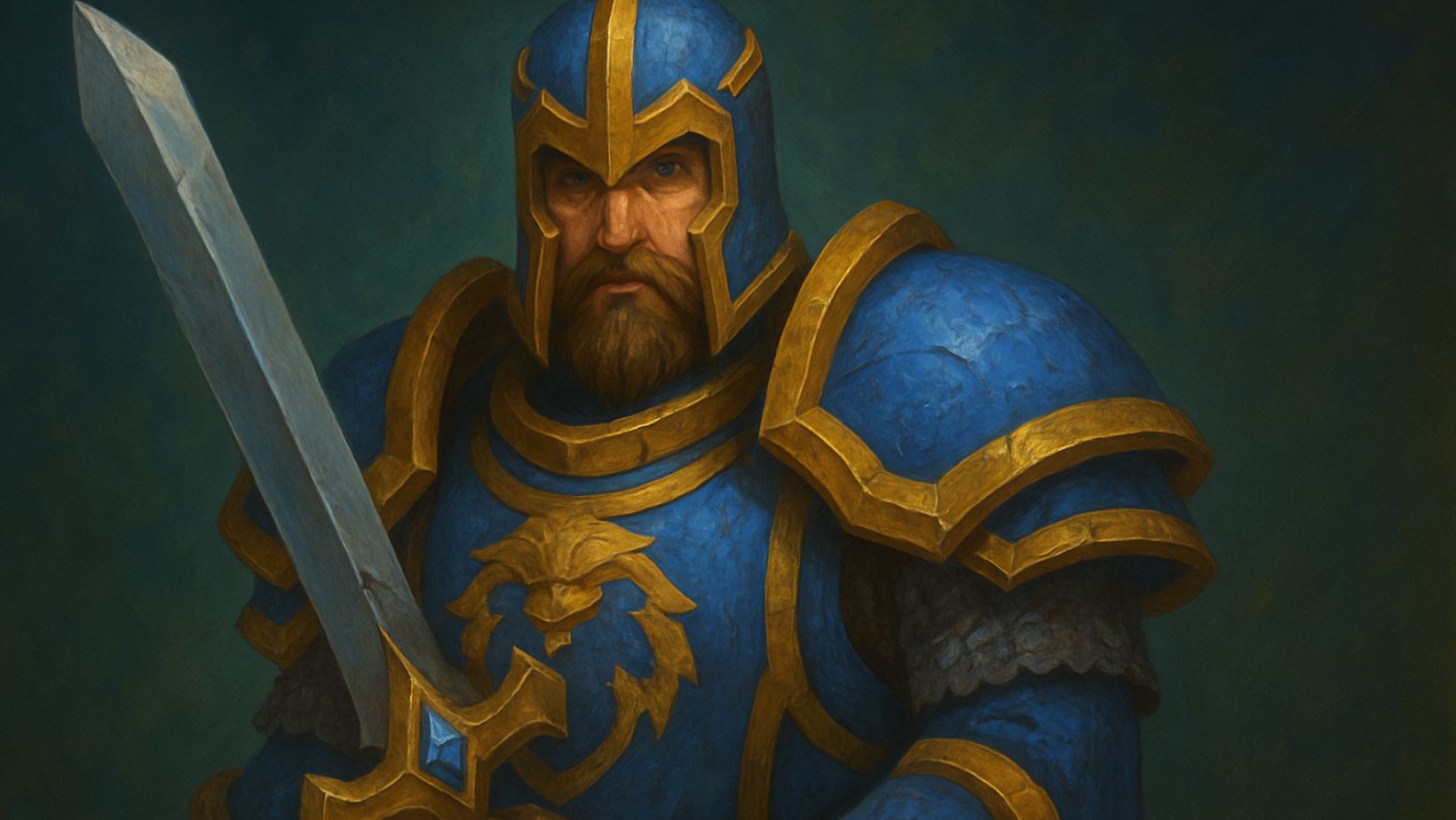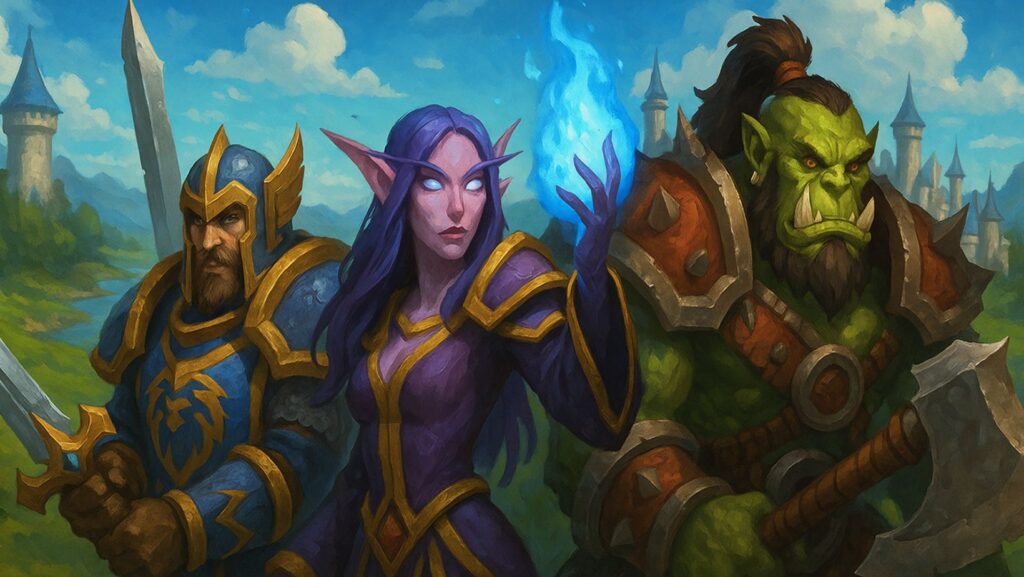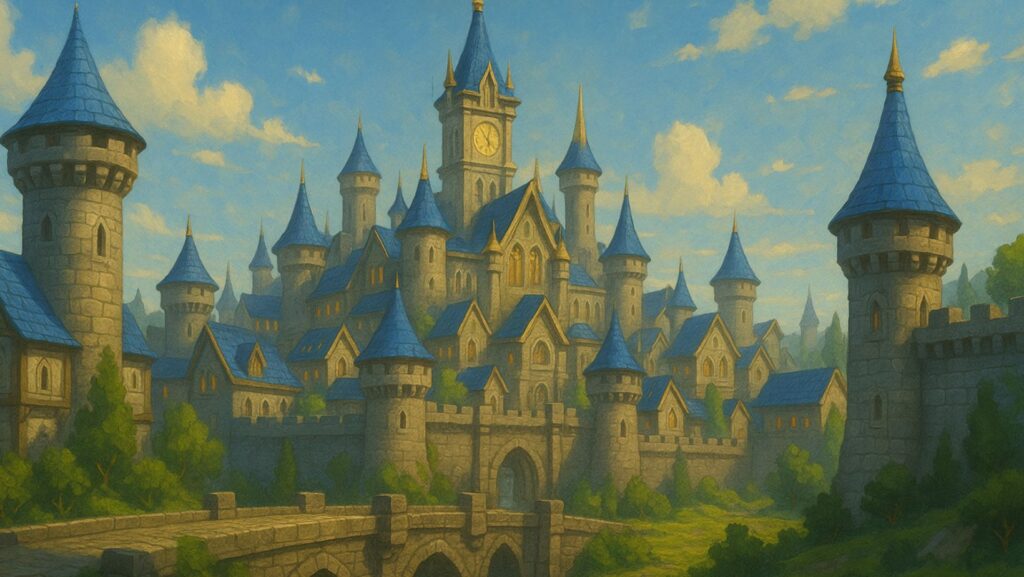
Finding your identity after the endgame
World of Warcraft has always been structured around a clear concept of progression. You level your character, you gear up, and then you reach the endgame — raiding, Mythic+ dungeons, PvP ladders, and the ongoing chase for power upgrades. For many players, this loop is the central draw of the game. But what happens when you step outside that loop? What if you’re not interested in parsing, pushing keystones, or grinding rating? The truth is, a large portion of WoW’s playerbase exists outside the competitive or structured “endgame.” They don’t raid on schedule, or they raid once and never return. They dip into Mythic+, but don’t chase score. They might dabble in PvP, but never climb past the bottom tier. Instead, they play the game for something else — something quieter, less recognized, and often overlooked by design and community alike. This is the post-content playstyle: a mode of engaging with World of Warcraft where the structured progression systems no longer define the experience. And despite the name, it’s not a sign of burnout or disengagement. For many, it’s where the game actually starts to feel relaxing, personal, and rewarding.
If you’re eager to get to experience what so many WoW veterans have experienced, then there’s little that you can do that will grant you as much progress as getting a mythic boost will! It’s the fastest and safest way of getting to and through the endgame.
Beyond the Numbers
Once players step off the treadmill of upgrades, they often discover different motivations. Some begin collecting mounts, toys, pets, or transmogs. Others turn their attention to leveling alts, exploring hidden questlines, or finishing old reputation grinds. These activities may lack the visible power increases that define traditional progression, but they’re far from pointless.
Mount collectors, for example, often organize weekly circuit routes, spanning old raids, rare spawn patrols, and vendor unlocks. They might research drop rates, engage in long-term farming routines, and maintain detailed spreadsheets of what’s missing. It’s not just about the number — it’s about the satisfaction of completion, of seeing the stables fill out.
The same can be said for pet battlers, transmog hunters, archivists chasing achievements, and players who max out every profession across their stable of characters. These goals are measurable, personal, and often deeply satisfying. They might not make a character stronger in a raid, but they do enrich the player’s experience of the world.
The World as a Sandbox
WoW is often treated like a theme park, where the ride begins when you hit max level and step into queues. But players who linger after the “main attractions” have been completed discover something else: the world is full of small, strange, and underappreciated corners.

There are secret cave paintings in Drustvar, cryptic NPC dialogue in Suramar, and flavor-heavy journals scattered across the Dragon Isles. There are puzzles, toys that change your appearance or summon surprise companions, and mini-events that activate at odd hours. These details don’t unlock gear or drop high lvl items. But they do reward curiosity, exploration, and a slower pace of play.
In this way, post-content players rediscover what made Azeroth compelling in the first place. They stop racing through zones and start noticing the sound design, the skyboxes, and the way a quest hub changes after completion. Without the pressure of keeping up with weekly caps or raid rosters, the game becomes a place to be, not just a checklist to finish.
Alts as a Lifestyle
Another major pillar of post-content play is the “alt life.” Some players spend entire expansions leveling and gearing new characters, trying out different class fantasies, or roleplaying new personas. They might avoid the current patch’s main grind entirely, opting instead to finally see what it’s like to quest through Pandaria as a Monk, or to run old dungeons as a Discipline Priest.
Alts allow for horizontal progression, which contrasts sharply with the vertical climb of endgame gearing. Instead of pushing one character to perfection, players explore breadth. They get to appreciate how different specs feel, how class-specific quests are written, and how various abilities interact with the world.
In expansions that are alt-friendly, this becomes a compelling mode of play. Features like account-wide unlocks, cross-faction access, and profession catch-ups make it more rewarding than ever. And while alt-heavy players may not get their names atop leaderboards, they often know the game’s systems inside and out.
The Comfort of Routine
Post-content players also tend to find comfort in routine. Logging in to run a few daily quests, clear an old raid, or restock auction items becomes a rhythm. It’s not about pressure. It’s about familiarity.
In this sense, WoW becomes a lifestyle game. Some compare it to fishing or gardening. A game you dip into regularly not because you’re chasing something big, but because the act of playing itself is enjoyable. The world feels lived-in. The characters feel like long-time friends. The activities might be repetitive, but they’re grounding.

This mode of play becomes especially important between patches, when high-end players begin to log off due to “content droughts.” For post-content players, droughts don’t matter. There’s always something to do, even if it’s not on the front page of Wowhead.
Designing for the Forgotten Player
Blizzard has made efforts in recent years to acknowledge these players — those who play casually, or who prioritize collection, exploration, or immersion over raw power. Systems like the Trading Post, transmog events, Timewalking, and solo challenges like the Mage Tower provide goals that are both meaningful and non-competitive.
However, many post-content players still feel underserved. Major systems continue to emphasize gear, combat, and “relevance.” Casual content is often shallow or timegated, and rewards for non-meta play are frequently cosmetic only.
There’s a tension in design between rewarding everyone equally and preserving progression. Post-content players don’t want their fun to invalidate competitive play. But they do want respect. They want systems that recognize their time and offer real, interesting ways to engage outside the raiding scene.
This is where Blizzard could expand: housing, for instance, would be a dream feature for many. More class-specific content, or small-scale solo stories, would also hit the mark. Even the return of more open-ended systems like archaeology could provide sandbox goals that suit this audience.
A Community in the Background
Just as there’s a social scene for mythic raiders and high-end PvPers, there’s a quieter community of players who share tips about secret transmog sets, route each other through pet trainer rotations, or help newcomers find missing lorebooks.
They don’t shout in trade chat, but they’re present. They might not post parses, but they fill Discords with guides on where to find that one missing achievement. They are the archivists, curators, collectors, and chill veterans who keep logging in — not because they have to, but because they still find joy in the game’s smallest corners.
In Conclusion
The term “endgame” implies a finish line. But for a significant portion of World of Warcraft’s community, that’s not how the game works. Their goals aren’t tied to raid bosses or rating thresholds. Their fun isn’t measured in damage meters or gold per hour. They are, in a sense, playing a different game — a quieter one, a broader one.
Post-content players show us that WoW is more than a treadmill. It’s a world worth revisiting, a space for creative play, and a place where joy can be found long after the main story ends. The more the game embraces these playstyles, the more complete its fantasy becomes.
For those who choose to stay after the bosses fall, Azeroth still has plenty to offer!






